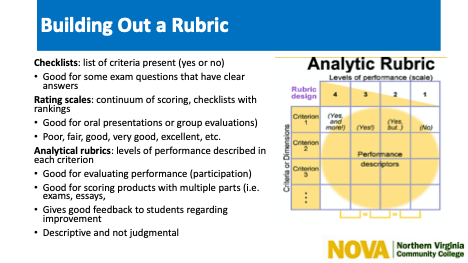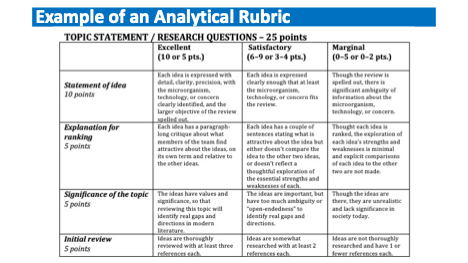-
Have you ever heard any of the following from your students?
-
Why did you give me this grade?
-
You didn't even lecture about that topic!
-
You never told us that we would be graded on spelling or grammar!
-
How were we to know you wanted X?
-
Susie and I studied together, yet you gave her an A and I got a C. Why?
-
-
For most faculty, grading (sometimes referred to as marking) is one of the most undesirable aspects of the job. To promote student growth and development, grading requires providing students with frequent and instructive feedback, both of which can be time-consuming and present other challenges. According to Saroyan & Amundsen (2004), most instructors are concerned with how to
-
manage assessment and grading in large classes
-
grade group work and class participation
-
increase reliability among multiple graders (TAs)
-
increase objectivity when marking
-
handle grading disputes (95).
-
-
While these are all important issues related to grading, we want to focus your attention on one specific grading technique - the development and use of rubrics, which have the potential to mitigate many of the concerns noted above. Additionally, grading rubrics can be used to assess a range of activities in any subject area.
-
To Do:
-
Reflect on the following questions and resources:
-
What is a grading rubric?
-
A rubric is an explicit set of criteria used for assessing a particular type of work or performance, and it provides more details than a single grade or mark. Rubrics, therefore, will help you grade more objectively and efficiently (Stevens & Levi, 2005).
-
-
What are the benefits of using a grading rubric?
-
Rubrics are useful for instructors and students alike:
-
-
-
Instructor Benefits
Rubrics:
Student Benefits
Rubrics:
help clarify and communicate assessment/performance expectations
help clarify assessment/performance expectations; clarity on what constitutes different levels of performance (grades).
provide more objective, consistent, and equitable grading of a range of student performances, assignments, and learning activities
if given to students along with the assessment/assignment, a rubric can show students how to meet expectations, making students more self-directed in their learning
ensure timely and constructive feedback
provide feedback that is more detailed, instructive, and specific in terms of how to improve one's performance on revised or subsequent work
can reduce grading time
increases the likelihood that students will include required elements of an assignment
can help to rationalize grades when students ask about your method of assessment (reduce grading disputes)
help illuminate specific areas where the student may need to exert more effort or improve skills.
provide a vehicle for increasing reliability among multiple graders (especially if you conduct grading calibration exercises).
serve as good documentation for accreditation purposes
-
What are the elements of a rubric?
-
Most commonly, a grading rubric is designed in a matrix or grid-type structure and includes grading criteria, levels of performance, the range of possible scores, and descriptors that serve as unique assessment tools for a specific assignment/assessment. There are different types of rubrics (e.g., checklists, rating scales, and analytic), each serving a different purpose (see Figure 1). The most common, however, is the analytic rubric (see Figure 2).
-
Figure 1
-

-
Figure 2
-




